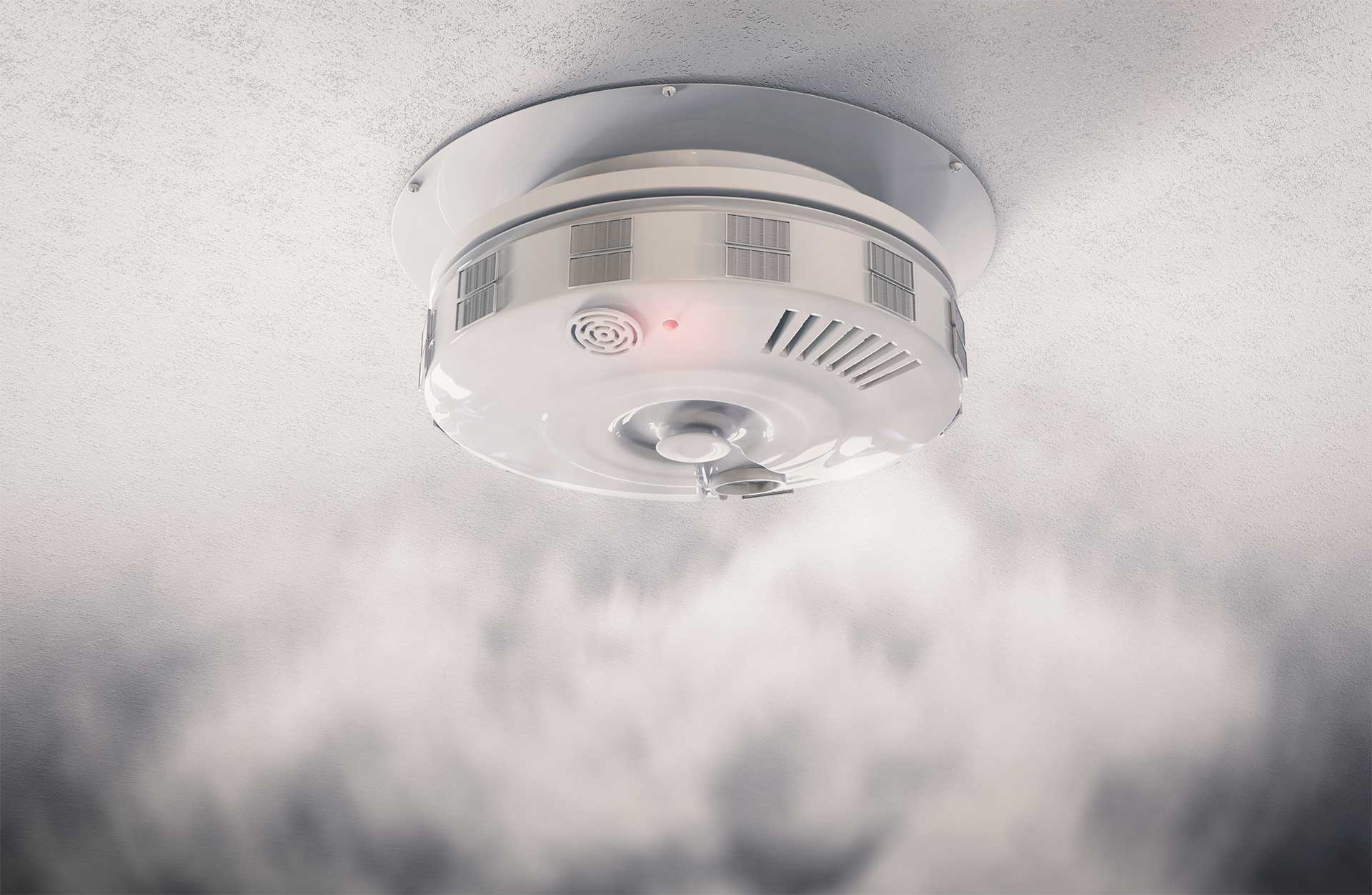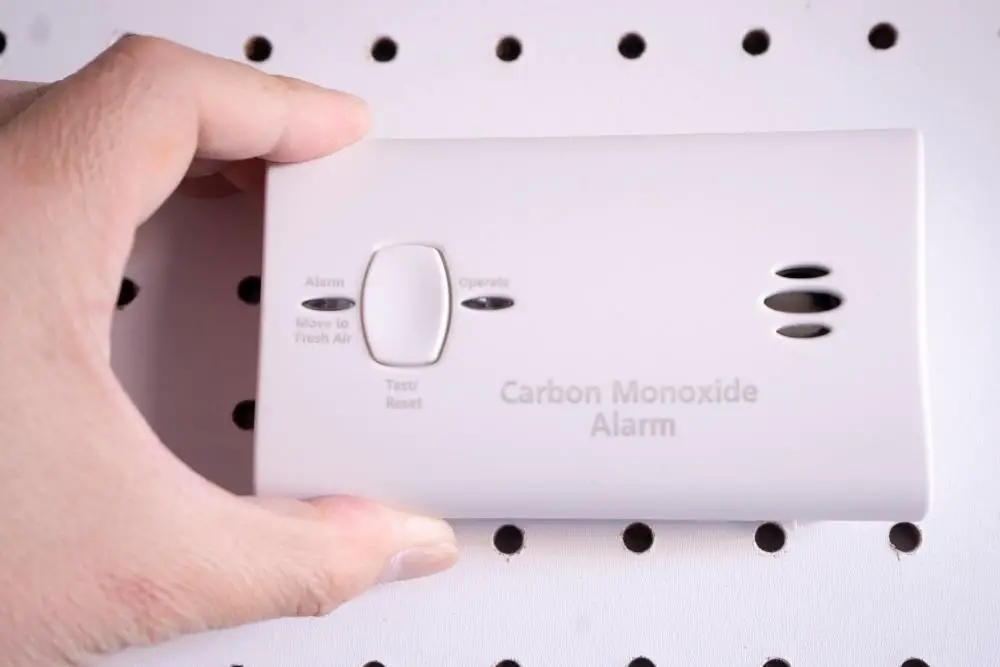My Carbon Monoxide Detector Is Going Off

A carbon monoxide (CO) detector sounding the alarm is never a welcome sound. It signals a potentially dangerous situation, and while your immediate priority is safety, the incident can also be a wake-up call about your home's energy efficiency and the health of your HVAC system. Understanding why your CO detector is going off and taking proactive steps to address the underlying issues can not only protect your family but also lead to significant energy savings.
Understanding Carbon Monoxide and Its Sources
Carbon monoxide is an odorless, colorless, and deadly gas produced by the incomplete combustion of fuels like natural gas, propane, oil, wood, and gasoline. Common sources in homes and businesses include:
- Furnaces: A malfunctioning furnace is a frequent culprit. Inefficient combustion or cracks in the heat exchanger can release CO into your living space.
- Water Heaters: Similar to furnaces, gas-fired water heaters can produce CO if they aren't properly maintained or vented.
- Fireplaces: Wood-burning fireplaces, especially older models, can release CO if the flue isn't open or the chimney is blocked.
- Gas Stoves and Ovens: While designed for cooking, gas appliances can emit CO if they are not properly ventilated.
- Generators: Running a generator indoors or too close to a building's air intakes can be extremely dangerous. Never operate a generator indoors.
- Vehicles: Idling cars in attached garages can quickly fill the space with CO.
The Environmental Protection Agency (EPA) emphasizes the importance of proper ventilation and regular appliance maintenance to prevent CO buildup.
Immediate Actions When the Alarm Sounds
If your CO detector sounds, take these steps immediately:
- Evacuate: Get everyone out of the building immediately.
- Call Emergency Services: From a safe location, call 911 or your local fire department.
- Don't Re-enter: Do not re-enter the building until emergency responders have cleared it and determined the source of the CO.
- Seek Medical Attention: If anyone is experiencing symptoms of CO poisoning (headache, dizziness, nausea, vomiting, confusion), seek immediate medical attention.
Investigating the Cause: Linking CO and Energy Inefficiency
Once the immediate danger is addressed, it's crucial to investigate the cause of the CO leak. Often, CO issues are linked to energy inefficiencies in your HVAC system and appliances. Here's how:
Furnace Problems and Energy Waste
A malfunctioning furnace can be a significant source of both CO and energy waste. Common issues include:
- Dirty Burners: Dirty burners impede efficient combustion, leading to CO production and wasted fuel.
- Cracked Heat Exchanger: A cracked heat exchanger allows CO to leak into the air ducts and circulate throughout the house. This is a serious safety hazard and also indicates a major energy loss as heated air escapes.
- Improper Air-Fuel Mixture: An incorrect air-fuel mixture in the combustion process leads to incomplete combustion and CO production. This also reduces the furnace's efficiency, requiring it to work harder and consume more energy.
- Blocked Flue: A blocked flue prevents proper venting of exhaust gases, causing CO to accumulate inside the home.
Energy Savings Tip: Regular furnace maintenance, including cleaning the burners, inspecting the heat exchanger, and ensuring proper venting, can significantly improve efficiency and reduce the risk of CO leaks. Consider upgrading to a high-efficiency furnace with an Annual Fuel Utilization Efficiency (AFUE) rating of 90% or higher. These furnaces are designed for more complete combustion and can save you 20-30% on your heating bills. Check for rebates from your utility company or state energy programs, as many offer incentives for upgrading to energy-efficient HVAC equipment.
Water Heater Woes: Efficiency and Safety
Similar to furnaces, gas water heaters can be a source of CO and energy waste. Common problems include:
- Sediment Buildup: Sediment buildup in the tank reduces efficiency and can contribute to CO production.
- Improper Venting: Inadequate venting allows CO to accumulate.
- Malfunctioning Burner: A malfunctioning burner leads to incomplete combustion.
Energy Savings Tip: Flush your water heater annually to remove sediment. Consider upgrading to a tankless water heater, which heats water on demand and eliminates standby heat loss, saving energy and reducing the risk of CO buildup. Tankless water heaters are often eligible for rebates and tax credits. Also, ensure proper ventilation around your water heater.
Fireplace Inefficiencies
Fireplaces, especially older models, can be major sources of energy loss. They can also contribute to CO buildup if not used properly. Issues include:
- Open Flue: Leaving the flue open allows warm air to escape, increasing heating costs.
- Drafts: Fireplaces can create drafts that pull cold air into the house.
- Incomplete Combustion: Incomplete combustion of wood releases CO.
Energy Savings Tip: When not in use, ensure the flue is closed tightly. Consider installing glass doors to reduce drafts and improve efficiency. Have your chimney inspected and cleaned annually to ensure proper venting and prevent blockages. Consider replacing an older, inefficient fireplace with a modern, high-efficiency model or a gas-burning insert that offers better control and cleaner combustion.
Smart Home Integration for Enhanced Safety and Efficiency
Integrating your CO detectors with your smart home system can provide an extra layer of protection and help you identify potential energy inefficiencies. Here's how:
- Smart CO Detectors: Smart CO detectors send alerts to your smartphone if CO is detected, even when you're away from home. Some models can even shut off your furnace or other gas appliances in the event of a leak.
- Smart Thermostats: Smart thermostats can learn your heating and cooling patterns and adjust the temperature automatically, saving energy and reducing the strain on your HVAC system. Some models can also monitor air quality and alert you to potential CO issues.
- Smart Sensors: Smart sensors can monitor temperature and humidity in different rooms, allowing you to identify areas of your home that are losing energy. This information can help you target energy-saving improvements.
- HVAC System Monitoring: Some advanced smart home systems can monitor the performance of your HVAC system, detecting potential problems early on. This can help you prevent breakdowns and improve efficiency.
ROI Considerations: While the initial investment in smart home technology may seem high, the long-term energy savings and enhanced safety can provide a significant return on investment. Many utility companies offer rebates on smart thermostats and other energy-efficient devices.
HVAC Contractor's Role: Prevention and Solutions
A qualified HVAC contractor plays a crucial role in preventing CO leaks and ensuring the efficiency of your heating and cooling systems. Look for contractors certified by organizations like NATE (North American Technician Excellence). A good contractor will:
- Perform Regular Maintenance: Schedule annual maintenance for your furnace, water heater, and other gas appliances.
- Inspect for Leaks: Conduct thorough inspections for CO leaks and other potential problems.
- Optimize Combustion: Adjust the air-fuel mixture to ensure efficient combustion.
- Clean and Repair Components: Clean burners, replace filters, and repair any damaged components.
- Recommend Upgrades: Advise you on energy-efficient upgrades that can save you money and reduce the risk of CO leaks.
Contractor Tip: When hiring an HVAC contractor, ask about their experience with energy-efficient systems and their knowledge of rebates and incentives. A reputable contractor will be able to provide you with a comprehensive assessment of your HVAC system and recommend solutions that meet your needs and budget.
Government Guidelines and Rebates
The U.S. Department of Energy and the EPA offer numerous resources and guidelines to help homeowners and businesses improve energy efficiency and reduce the risk of CO poisoning. Energy Star is a program that identifies energy-efficient products that meet strict performance standards. Look for the Energy Star label when purchasing new appliances and HVAC equipment.
Database of State Incentives for Renewables & Efficiency (DSIRE) is a comprehensive source of information on state, local, utility, and federal incentives and policies that support renewable energy and energy efficiency.
Take advantage of these resources and incentives to make your home or business safer and more energy-efficient.
Conclusion
A carbon monoxide detector going off is a serious warning that should never be ignored. By taking immediate action, investigating the cause, and addressing the underlying issues, you can protect your family and save money on your energy bills. Regular HVAC maintenance, energy-efficient upgrades, and smart home integration can all contribute to a safer, more comfortable, and more sustainable living environment. Remember to prioritize safety, consult with qualified professionals, and take advantage of available resources and incentives.










